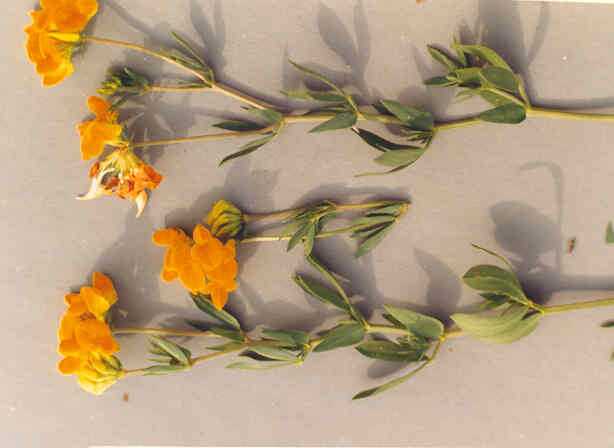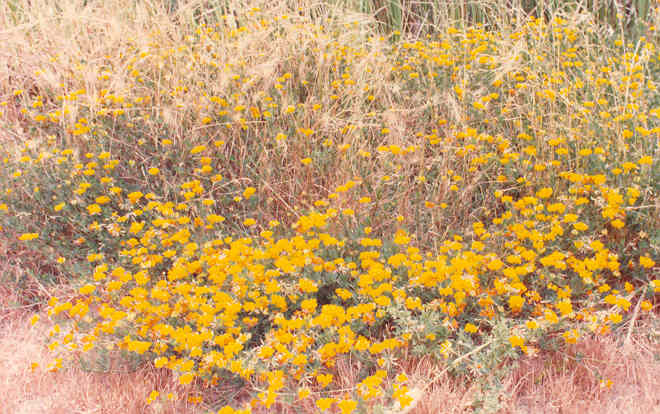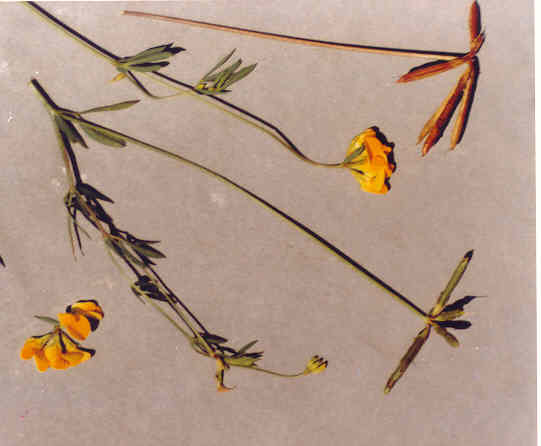
 |
Lotus corniculatus L.Fabaceae (Pea Family)EurasiaBirdfoot Trefoil |
June Photo
Plant Characteristics:
Perennial, rhizomes 0; +/- glabrous or strigose; stems generally solid,
decumbent or ascending; leaf stipules gland-like; lfts. 5, 5-20 mm., linear to
obovate, 3 +/- palmately arrayed at axis tip, lower two stipular in position;
infl. 3-8 fld.; peduncle bracted, 1-1.4 mm. long; calyx 2-3.5 mm., lobes +/- =
tube, not outcurved in bud; corolla 8-14 mm., bright yellow, or the banner
reddish; fr. dehiscent, 1.5-3.5 cm., narrowly oblong; seeds few-several.
Habitat:
Occasional in lawns, on roadsides, etc. as a waif; introd. from Europe.
June-Sept.
Name:
Lotus is from the Greek and was
originally applied to a fruit which was said to make those who tasted it forget
their homes. Latin, cornu,
a horn and Latin, latus, broad. (Jaeger 67,137). Corniculatus,
horned or broadly horned.
General:
Common in the study area. Photographed
along Back Bay Dr. between Big Canyon and Eastbluff Dr. (my comments).
Probably naturalized in open disturbed areas. In Europe, diploid L.
tenuis, is segregated; it seems indistinguishable in CA.
Some plants toxic by production of cyanide-releasing compounds.
(Hickman, Ed. 619).
Perhaps 150 species, of all continents; but mostly N. Hemisphere.
(Munz, Flora So. Calif.
444).
Text Ref:
Hickman, Ed. 618; Munz, Calif.
Flora 446; Munz, Flora So. Calif.
449; Roberts 24.
Photo Ref:
June 4 83 # 3; June 5 83 # 6; July 3 83 # 6.
Identity: by R. De Ruff,
confirmed by John Johnson.
First Found: June 1983.
Computer Ref: Plant Data 74.
Have plant specimen.
Last edit 12/18/04.
 |
 |
June Photo July 1983